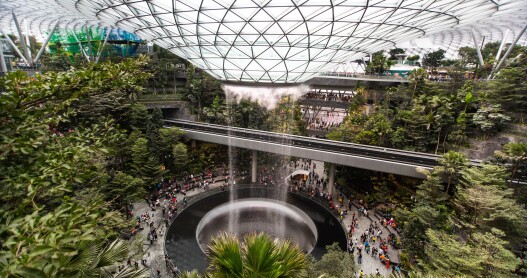Overview
When’s the best time to go to Munich?
Many tourists flock to Munich in late September/early October for Oktoberfest, but this is when hotel rates soar through the roof. Late spring or early fall are ideal times to go. You’ll avoid the summer crowds, get a lower rate on a hotel, and still experience all the city has to offer in warm weather.
How to get around Munich
Munich Airport is Germany’s second busiest airport. It’s a fair distance outside of Munich, so public transportation—either the S1 or the S8—is the recommended way to enter the city. A one-way ticket will cost you just over 10 euros.
Munich has an excellent public transportation system consisting of the U-Bahn, S-Bahn, trams, and buses. If you’re planning a day of sightseeing, purchase a day ticket for unlimited access. Alternatively, you can choose to walk or rent a bicycle (bike rentals are available at Hauptbahnhof, the main train station). Munich is a flat city, and cycling is a very popular mode of transportation.
Can’t miss things to do in Munich
Müncheners are very active, so go local by taking a walk or a bike ride along the Isar River and stopping for refreshment at one of the beer gardens en route. You’ll observe more of Munich and discover how the locals really live.
Food and drink to try in Munich
You won’t go hungry when you’re in Munich, as Bavarian food is very hearty, consisting of large portions of pork, sausage, and potatoes. Be sure to try a Weißwurstfrühstück (white sausage breakfast). It typically consists of white sausage, sweet mustard, and a pretzel, often served with a beer. Traditionally it was only eaten in the morning, but now you can eat it any time of day. Germany is famous for its breweries, and approximately half of them are located in Bavaria. Try a few Munich-based brews including Paulaner, the top-selling beer in Munich. You’ll also want to sample a variety of styles—like a Helles, a pale, malty, lightly hopped beer, or maybe a Weizenbock, a dark, slightly spicy beer.
Culture in Munich
Munich prides itself on both its traditions and its modernity. As a result, the city is often called the “Land of Laptops and Lederhosen.” It’s not uncommon, especially during festivals, to see women walking around in dirndls and men wearing lederhosen. Unsurprisingly, beer has a long-standing tradition in Munich, so much so that Hirschgarten, Europe’s largest beer garden, is sometimes referred to as “Munich’s living room.” Unlike other places in the world, though, families and beer do mix—and not in a bad way. Many beer gardens have playgrounds situated near tables so that the whole family can enjoy the outing. It’s not about overindulging but about enjoying time with friends and family over a leisurely beer or two.
Oktoberfest is the most famous festival in Munich, running 16 days from the middle of September to the first week in October each year. Lesser known but loved by locals is the Starbierfest (Strong Beer Festival), which runs during Lent. But go easy—this beer has around 7.5 percent alcohol content. Tollwood is a cultural and environmental festival of sorts running in both summer and winter. It features musical and theatrical performances along with multicultural food vendors. You don’t want to miss Fasching, Munich’s Carnival. It runs from January to March every year. Bring your finest dress, because there are over 800 fancy-dress balls held every year during this time!
Local travel tips for Munich
When tipping in restaurants, locals will simply round up the bill, so if the bill comes to 28.60 euros, a Münchener would give the server 30 euros, or perhaps 31 if the service was really good. Servers’ base wages are much higher here than in North America, so you can tip less. On escalators, you’ll want to stand on the right side. The left side is reserved for people in a hurry, walking upward, so keep the left side clear. German efficiency at its finest! As a word of caution, watch out for cyclists. Many streets have a bike lane between the walkway and the road. Cyclists move fast here, so you never want to cross a lane without first checking that the coast is clear. People say drivers are aggressive in Munich, but they have nothing on the cyclists!
Guide Editor
Laurel Robbins is an award-winning travel blogger. She’s originally from Canada she now calls Munich, Germany home.






